Yasmeen Hitti
Laplacian Change Point Detection for Single and Multi-view Dynamic Graphs
Feb 02, 2023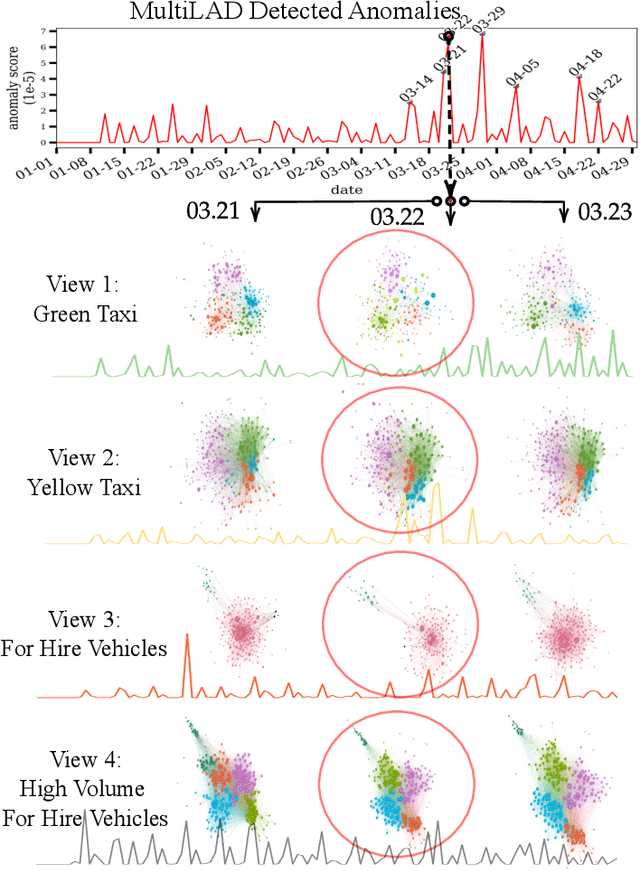
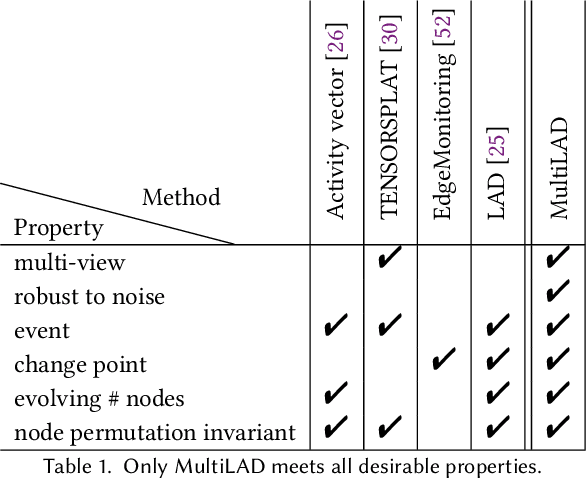
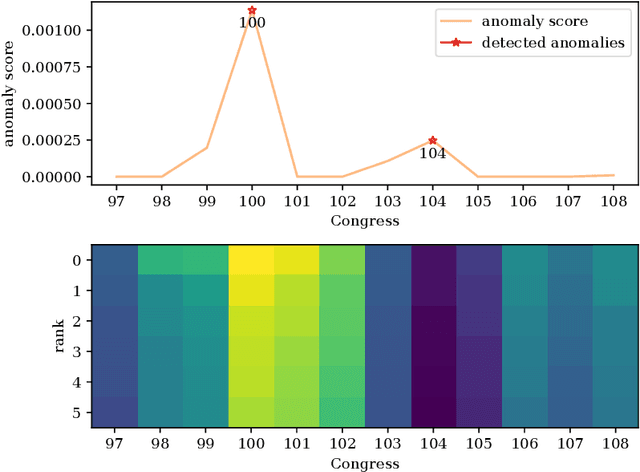
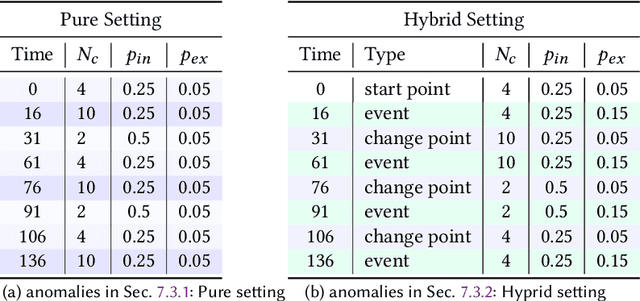
Abstract:Dynamic graphs are rich data structures that are used to model complex relationships between entities over time. In particular, anomaly detection in temporal graphs is crucial for many real world applications such as intrusion identification in network systems, detection of ecosystem disturbances and detection of epidemic outbreaks. In this paper, we focus on change point detection in dynamic graphs and address three main challenges associated with this problem: i). how to compare graph snapshots across time, ii). how to capture temporal dependencies, and iii). how to combine different views of a temporal graph. To solve the above challenges, we first propose Laplacian Anomaly Detection (LAD) which uses the spectrum of graph Laplacian as the low dimensional embedding of the graph structure at each snapshot. LAD explicitly models short term and long term dependencies by applying two sliding windows. Next, we propose MultiLAD, a simple and effective generalization of LAD to multi-view graphs. MultiLAD provides the first change point detection method for multi-view dynamic graphs. It aggregates the singular values of the normalized graph Laplacian from different views through the scalar power mean operation. Through extensive synthetic experiments, we show that i). LAD and MultiLAD are accurate and outperforms state-of-the-art baselines and their multi-view extensions by a large margin, ii). MultiLAD's advantage over contenders significantly increases when additional views are available, and iii). MultiLAD is highly robust to noise from individual views. In five real world dynamic graphs, we demonstrate that LAD and MultiLAD identify significant events as top anomalies such as the implementation of government COVID-19 interventions which impacted the population mobility in multi-view traffic networks.
GrowSpace: Learning How to Shape Plants
Oct 15, 2021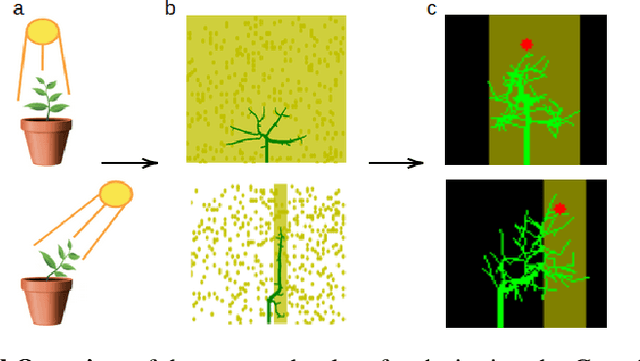

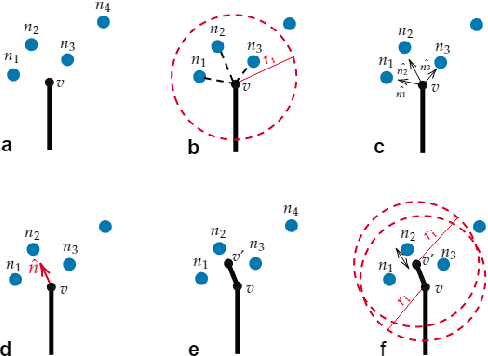
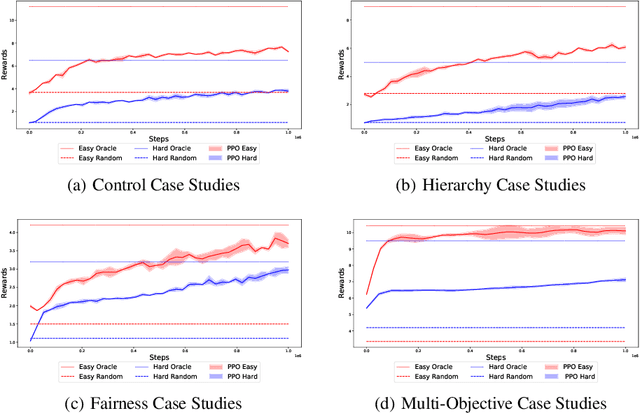
Abstract:Plants are dynamic systems that are integral to our existence and survival. Plants face environment changes and adapt over time to their surrounding conditions. We argue that plant responses to an environmental stimulus are a good example of a real-world problem that can be approached within a reinforcement learning (RL)framework. With the objective of controlling a plant by moving the light source, we propose GrowSpace, as a new RL benchmark. The back-end of the simulator is implemented using the Space Colonisation Algorithm, a plant growing model based on competition for space. Compared to video game RL environments, this simulator addresses a real-world problem and serves as a test bed to visualize plant growth and movement in a faster way than physical experiments. GrowSpace is composed of a suite of challenges that tackle several problems such as control, multi-stage learning,fairness and multi-objective learning. We provide agent baselines alongside case studies to demonstrate the difficulty of the proposed benchmark.
Laplacian Change Point Detection for Dynamic Graphs
Jul 02, 2020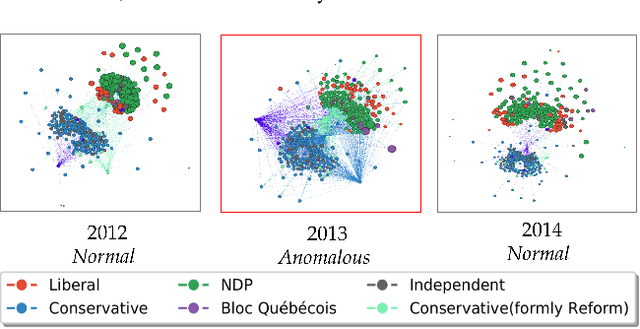

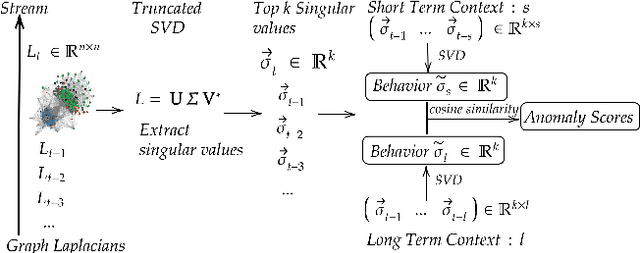
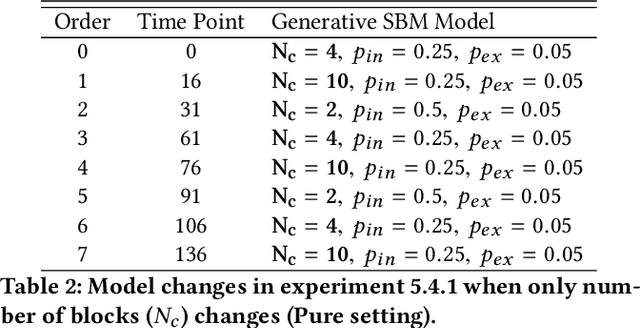
Abstract:Dynamic and temporal graphs are rich data structures that are used to model complex relationships between entities over time. In particular, anomaly detection in temporal graphs is crucial for many real world applications such as intrusion identification in network systems, detection of ecosystem disturbances and detection of epidemic outbreaks. In this paper, we focus on change point detection in dynamic graphs and address two main challenges associated with this problem: I) how to compare graph snapshots across time, II) how to capture temporal dependencies. To solve the above challenges, we propose Laplacian Anomaly Detection (LAD) which uses the spectrum of the Laplacian matrix of the graph structure at each snapshot to obtain low dimensional embeddings. LAD explicitly models short term and long term dependencies by applying two sliding windows. In synthetic experiments, LAD outperforms the state-of-the-art method. We also evaluate our method on three real dynamic networks: UCI message network, US senate co-sponsorship network and Canadian bill voting network. In all three datasets, we demonstrate that our method can more effectively identify anomalous time points according to significant real world events.
 Add to Chrome
Add to Chrome Add to Firefox
Add to Firefox Add to Edge
Add to Edge